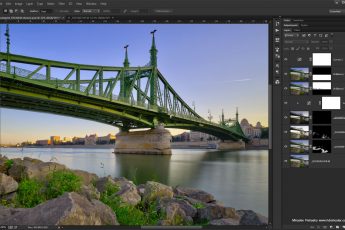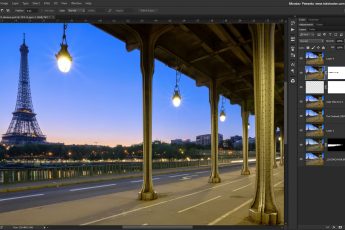Backing up your photos
With the number of photos I take and many of you also do, it’s very important to have backups. One never knows what could happen, and loosing years of work would be disastreous. So having redudant copies is a must. So here I will show you how I do it, and what I suggest you should do.
What I save
For my photos I save 4 different things:
- original RAW files, as downloaded from the camera. There are organized by year and date, with each folder named the location or event they are assigned to.
- edited PSD or PSB file, for all the photos I edited and finished. These tend to be quite big and most photographers don’t keep them, but I like to, as it makes it easy to go back and o tweaks if needed. Also, it makes it easy to show how a particular photo was edited.
- web sized JPG version of finished photos. This one I added a watermark, and have it ready for uploads to social media or on-line portfolios. This version is sharpened for the web resolution, usually around 1350×900 pixels.
- full sized JPG version. This one I keep just for convenience. If any of my clients buy a photo, I can sent it to them immediately, as this version is ready. If they do ask for a TIFF or something like that, I have to go back to the PSD file of course.
Not everyone saves everything, and you should decide for yourself what you need. Mostly the RAW and a final edited photos in TIFF or JPG are important, other depends on your preference.
Where to back up
The best goal would be to have a backup copy of all you need in three spots:
- on site copy. You have a duplicate of everything on an external drive or a local server in your home or workplace. This is for cases when you computer hardware or just the HDD breaks down and is no longer accessible, either to hardware or software failure, like viruses or ransom-ware.
- off site copy. You have a duplicate of everything on and external drive or server in a second location you either own or have access to (eg. your parents, friends…). It’s best if this location is not in the same building or even better, city. This is for a simple restore in the case of fire, flooding, burglary or similar.
- in cloud backup. The last backup is with an INTERNET based company, that will backup all you data to their servers. This is great if all you other backups fail, and you need to restore them. This is usually the slowest backup, so it’s best if you need to restore smaller parts, like accidentally deleted file and similar.
How do I backup
Now I will show you how and where I backup my photos. I try to have many redundant copies, and as one says, better safe than sorry.
On site backup
 The primary location of my photos is on internal drivers in my PC. With 6, 8 and 10Tb drives available, this is not that hard to archieve, and even after years of taking photos, I have enought space. If this would not be possible, I would use a external drive box for this with multiple hard drivers.
The primary location of my photos is on internal drivers in my PC. With 6, 8 and 10Tb drives available, this is not that hard to archieve, and even after years of taking photos, I have enought space. If this would not be possible, I would use a external drive box for this with multiple hard drivers.
Secondly I use a Synology NAS server with HDDs in a RAID configuration. I use SyncToy program from Microsoft to synchronize the photo folders to a folder on the server every day. Like that I have a local backup of everything without having to do much. I do the sync manually, and its only set to echo (the PC folder changes are copied to the server, not the other way) as I want to have control over it.
Off site backup
For this I don’t backup everything. I have a smaller external hard drive, on which I save all the final photos as 100% JPGs and PSD versions. This is the last rescue for me, so these are the most important photos in my option to keep.
This get updated less regularly, only about once per month or so.
Cloud backup
For clouds storage, you can use a service like BackBlaze or Carbonite. There are many more, but these two seem to be most popular. I right now don’t have an online backup, as I’m in the middle of reorganizing my library, but that will be corrected soon.
These are meant for big backups, that are just there for a case of emergency, not that you access them every-time you need a photo.
I do have a copy of the web sized and full sized JPGs in my SmugMug portfolio. Of course only the web sized are in a public gallery. The full sized, in a private gallery, are great if I need to send one to someone, as I have access from anywhere. This is for quick online access if needed.
I also use few other Cloud accounts, Amazon Drive and OneDrive to be exact, but these are more for sharing and sending out files, than for backup.
Final thoughts
It’s very risky to have no backup. You never know what can happen. It also risky to not have a real structure for how you store your photos. If you don’t know where they are, it’s easy to just delete some accidentally. I still can’t find some of the ones I posted years ago, before I gave more thought into it. And I probably never will. And if you ever need to reorganize a Lightroom catalog, you will quickly find out why that is a very bad idea :)
So keep you files structured, save and backed up, at least once..







Leave a Comment